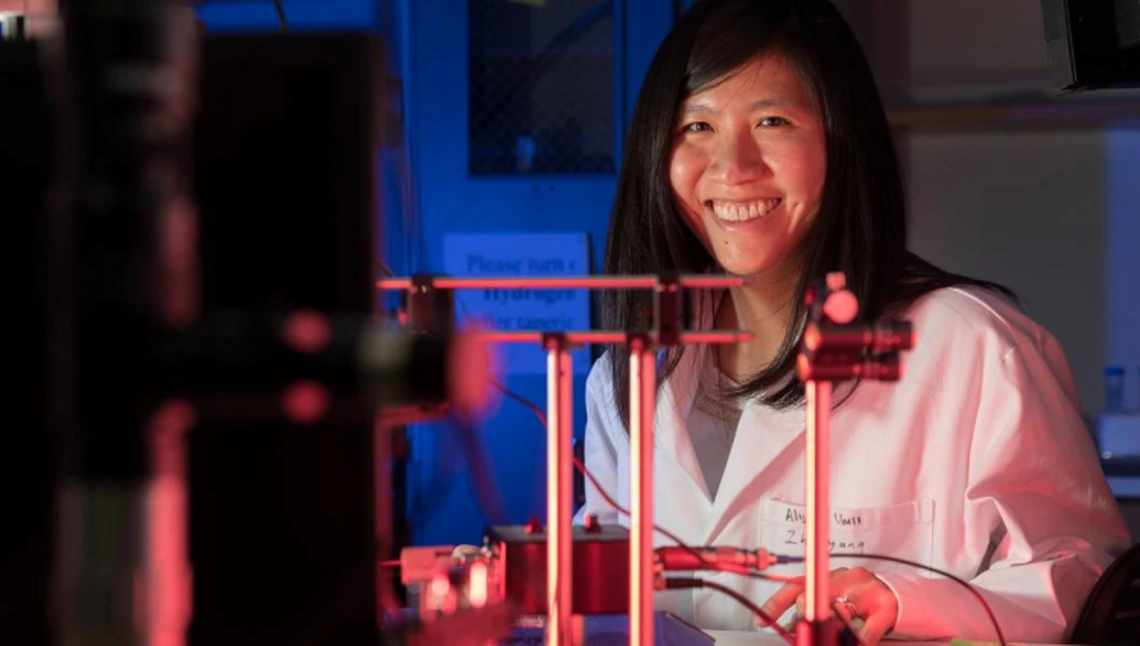Su Earns $1.8M Maximizing Investigators' Research Award

BME assistant professor Judith Su, a member of the BIO5 Institute, has received a $1.82 million, five-year Maximizing Investigators' Research Award from the National Institute of General Medical Sciences to further research at her Little Sensor Lab.
At the core of Su's lab is a one-of-a-kind technology called the frequency locked optical whispering evanescent resonator, or FLOWER, which takes advantage of a phenomenon called whispering gallery waves. The most famous examples of these waves come in the form of sound: Whisper something from one end of a room with specially rounded walls, such as at St Paul's Cathedral in London, and a friend at the other end of the room can make out what you are saying from 100 feet away.
To detect substances down to the single molecule, FLOWER uses waves of light instead of sound, and at a much smaller scale of about 100 microns across – about the size of a grain of table salt. The setup consists of a toroid, or doughnut-shaped ring, through which light travels around and around.
Each time the light makes a loop, a small amount extends out beyond the sensor and interacts with a solution – such as urine, blood, sweat or water. If the molecule under scrutiny, also known as the analyte, is present, even in small quantities, it changes the light's index of refraction very slightly. But, because the light interacts with the molecule so many times as it loops around the ring, the change becomes more noticeable, making FLOWER far more sensitive than many existing sensing methods. This method can detect everything from doping agents to biomarkers for cancer, Alzheimer's disease, Lyme disease and even COVID-19.
"Normal sensors will interact with a molecule once. But in this case, it will interact with the molecule hundreds of thousands of times, so we get this buildup of signal, which is what gives us our sensitivity boost," Su said. "We're also starting a project to research olfaction, vapor and breath. There are a lot of molecules in the air that could provide a noninvasive way to test for disease. Say, a breath test for COVID-19 instead of a swab or a blood test."
In an interview with KGUN9, Su discussed the potential for this technology to detect COVID-19.
“It can take up to 10 days or even more to see symptoms, and so this is a situation where, because we have such a sensitive sensor, we can detect lower concentrations of the virus and detect this at a really early stage," Su said.
